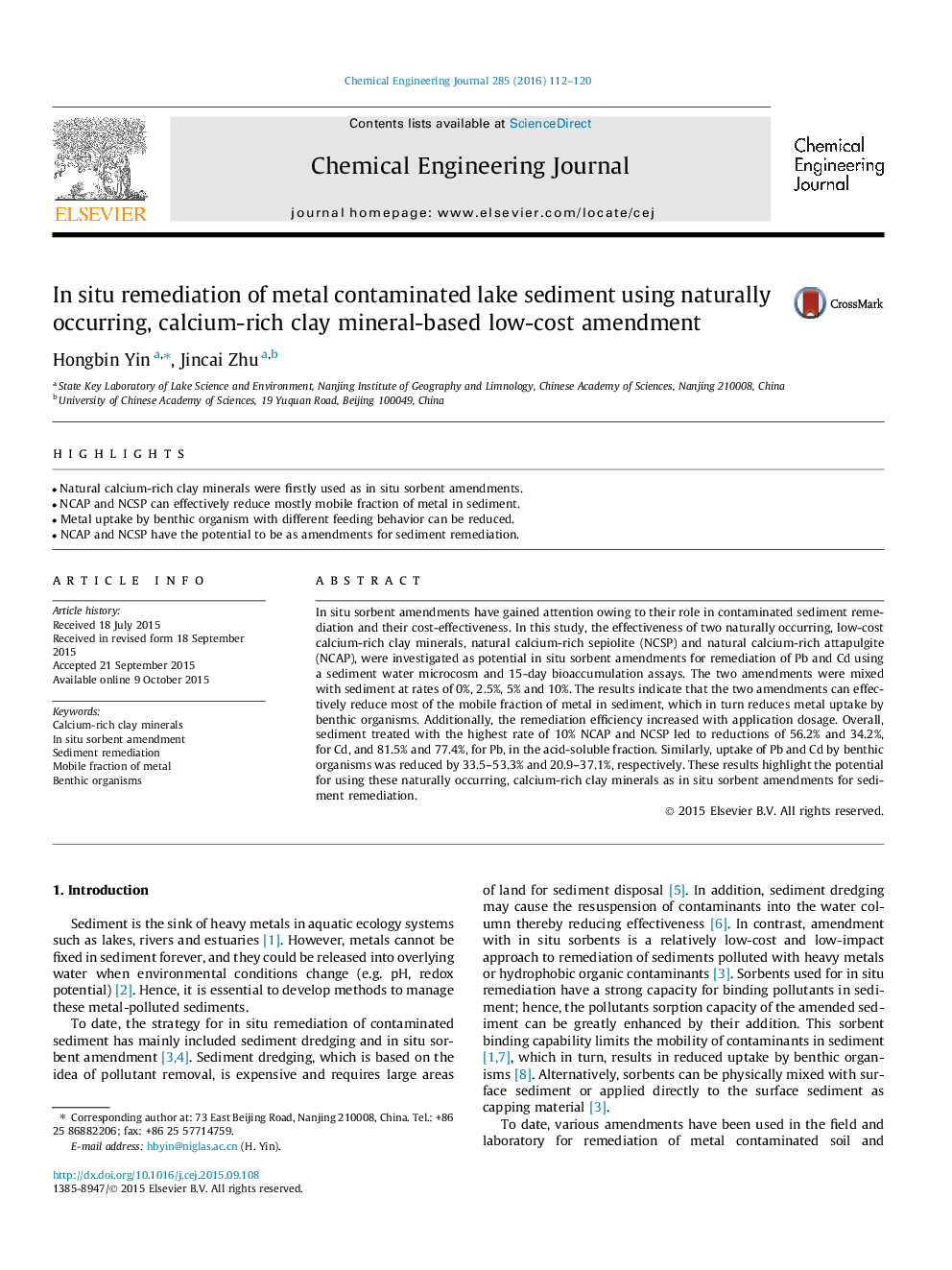| Article ID | Journal | Published Year | Pages | File Type |
|---|---|---|---|---|
| 6583074 | Chemical Engineering Journal | 2016 | 9 Pages |
Abstract
In situ sorbent amendments have gained attention owing to their role in contaminated sediment remediation and their cost-effectiveness. In this study, the effectiveness of two naturally occurring, low-cost calcium-rich clay minerals, natural calcium-rich sepiolite (NCSP) and natural calcium-rich attapulgite (NCAP), were investigated as potential in situ sorbent amendments for remediation of Pb and Cd using a sediment water microcosm and 15-day bioaccumulation assays. The two amendments were mixed with sediment at rates of 0%, 2.5%, 5% and 10%. The results indicate that the two amendments can effectively reduce most of the mobile fraction of metal in sediment, which in turn reduces metal uptake by benthic organisms. Additionally, the remediation efficiency increased with application dosage. Overall, sediment treated with the highest rate of 10% NCAP and NCSP led to reductions of 56.2% and 34.2%, for Cd, and 81.5% and 77.4%, for Pb, in the acid-soluble fraction. Similarly, uptake of Pb and Cd by benthic organisms was reduced by 33.5-53.3% and 20.9-37.1%, respectively. These results highlight the potential for using these naturally occurring, calcium-rich clay minerals as in situ sorbent amendments for sediment remediation.
Related Topics
Physical Sciences and Engineering
Chemical Engineering
Chemical Engineering (General)
Authors
Hongbin Yin, Jincan Zhu,
